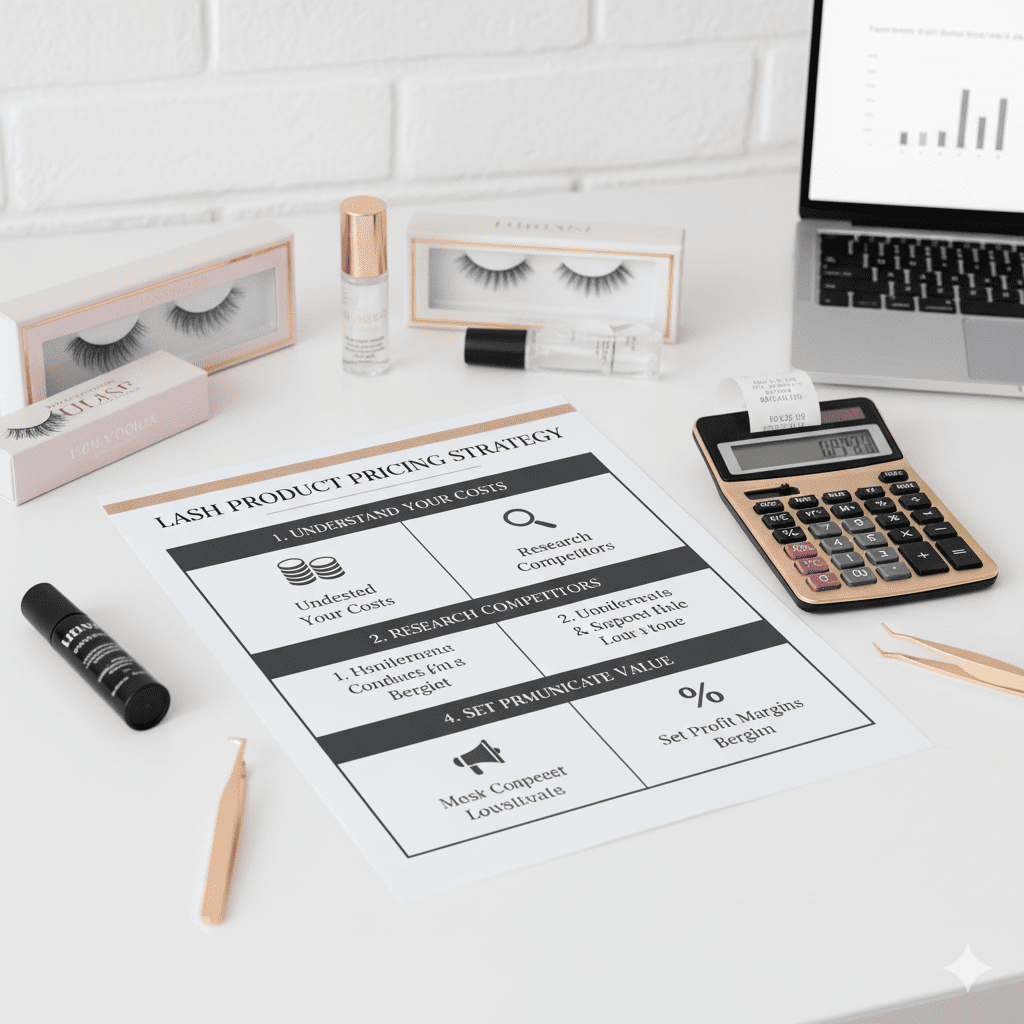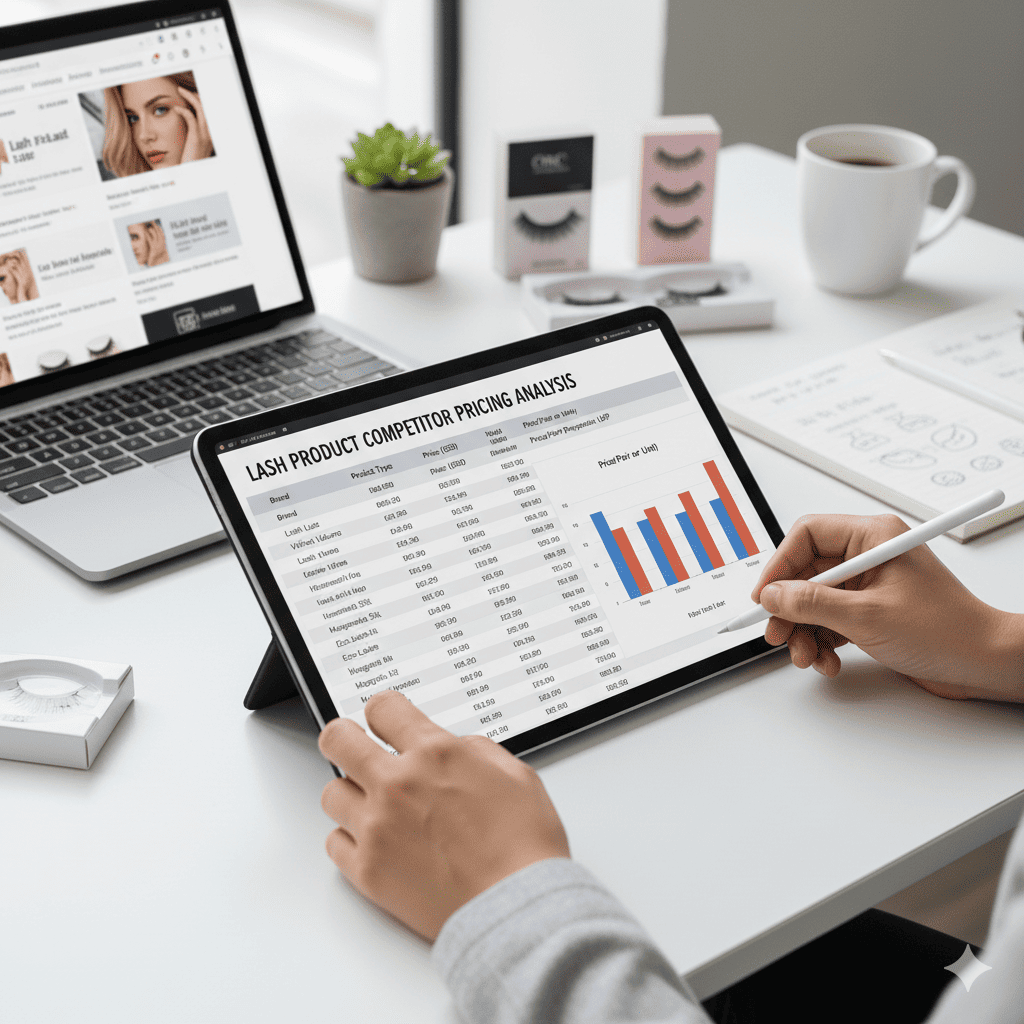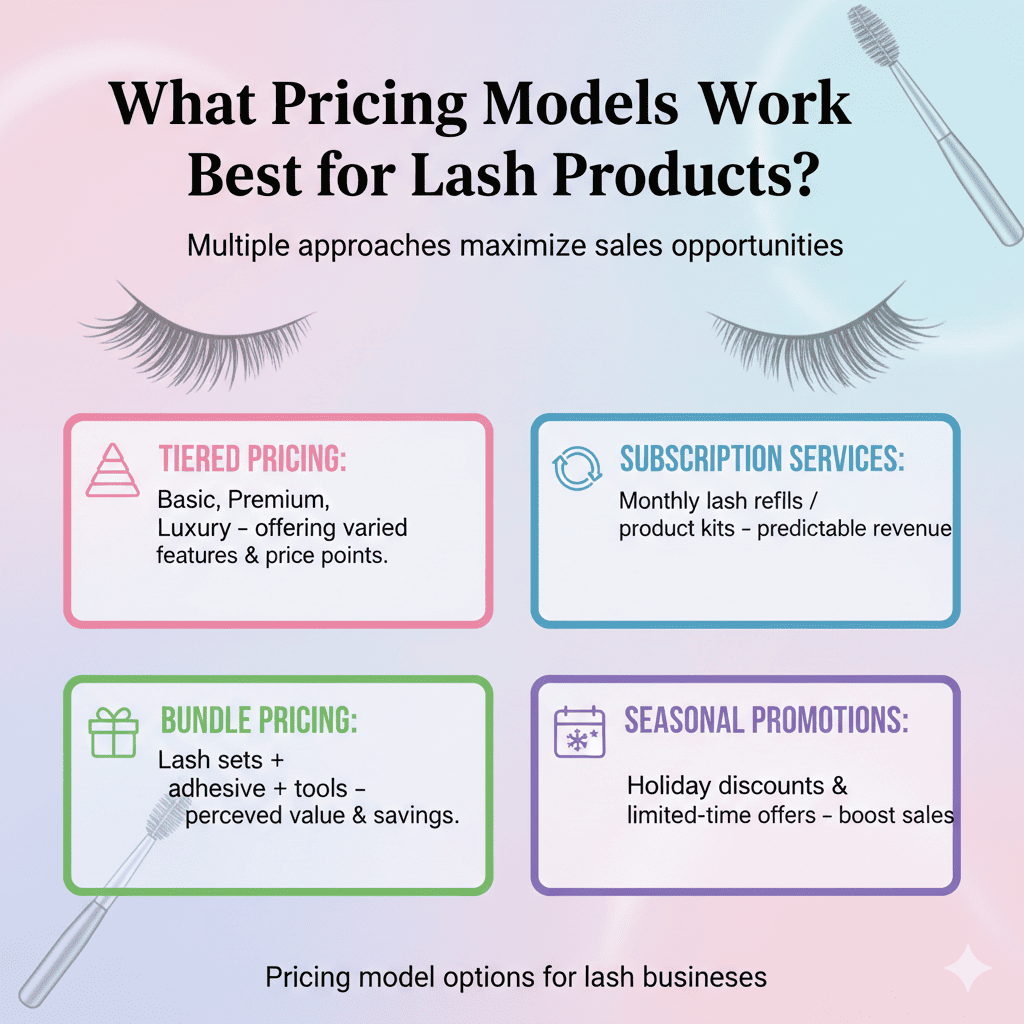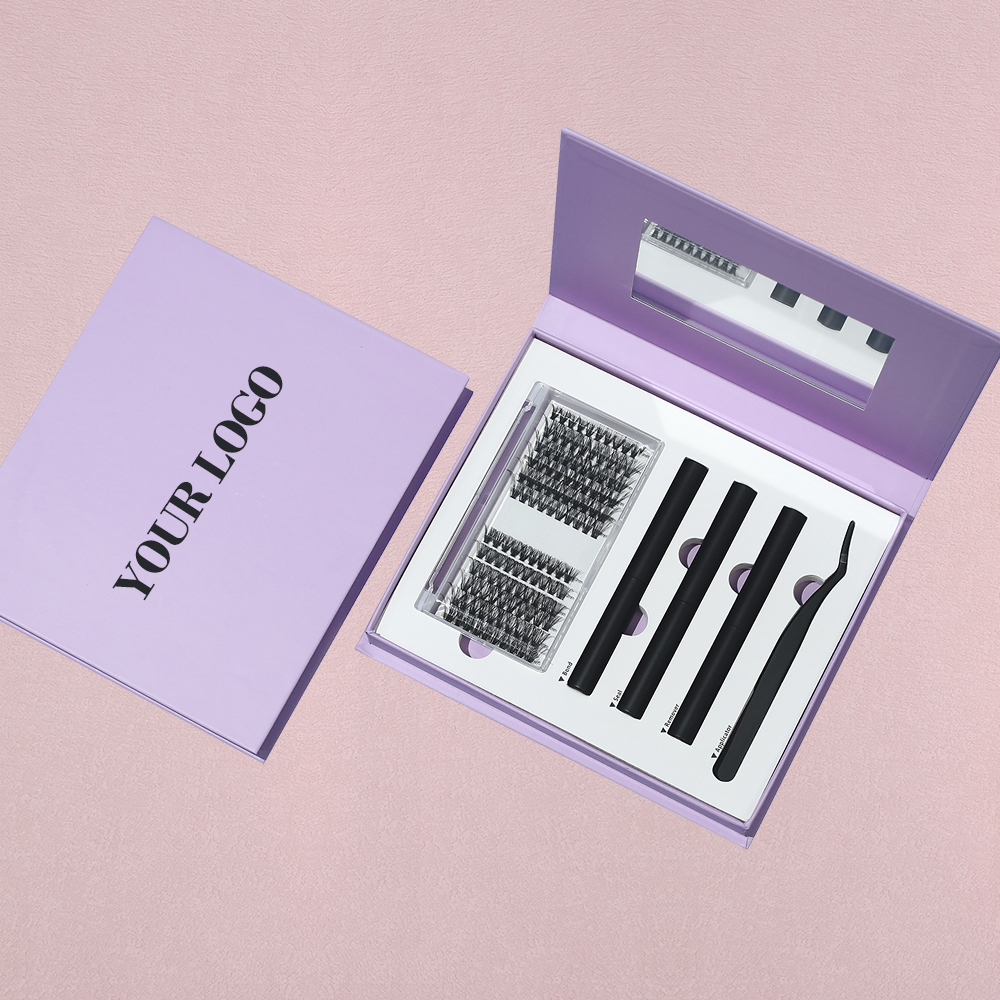Setting the right prices for your lash products can feel overwhelming. Many new brands struggle with finding the perfect balance.
Effective lash product pricing requires understanding your costs, researching competitors, setting profit margins, and communicating value to customers. This approach ensures your business remains profitable while staying competitive in the market.
Whether you’re launching your first lash line or adjusting your current pricing, these strategies will help you create a sustainable business model. Let’s explore how to price your lash products effectively.
Why Is Proper Pricing Crucial for Your Lash Business?
Pricing affects everything from customer perception to business sustainability. Getting it wrong can harm your brand.
Proper pricing ensures profitability, attracts the right customers, and positions your brand correctly in the competitive lash market. It’s the foundation of business success [1][3].
Pricing Impact on Business Success
| Pricing Factor | Positive Outcome | Negative Consequence |
|---|---|---|
| Profit Margin | Sustainable business growth | Financial struggles [3] |
| Customer Perception | Attracts quality-focused clients | Attracts bargain hunters [1] |
| Market Positioning | Clear brand identity | Confused market presence [3] |
| Competitive Edge | Smart market positioning | Lost sales to competitors [3] |
| Business Longevity | Steady revenue stream | Short business lifespan [1] |
Proper pricing directly impacts your ability to cover costs and generate profit [3]. Your prices communicate value to customers – too low may signal poor quality, while too high might deter potential buyers [1]. Research shows that pricing affects the type of customers you attract; bargain pricing tends to draw clients who constantly seek discounts [1]. The right pricing strategy positions your brand effectively within the market, whether you’re targeting luxury or budget-conscious segments [3]. Most importantly, sustainable pricing ensures your business can grow and thrive long-term.
How Do You Calculate Your True Product Costs?
Understanding your complete costs is the first step toward profitable pricing. Many new brands underestimate their expenses.
Calculating true costs involves considering Cost of Goods Sold (COGS), overhead expenses, shipping costs, and labor to determine your break-even point. This ensures you don’t price below your costs [3].
Cost Calculation Components
| Cost Category | Specific Elements | Calculation Method |
|---|---|---|
| COGS | Raw materials, packaging | Material costs + production labor [3] |
| Overhead | Rent, utilities, marketing | Monthly business expenses [3] |
| Shipping | Supplies, courier fees | Per-order shipping costs [3] |
| Labor | Production time, packaging | Hourly rate × time spent [3] |
| Hidden Costs | Transaction fees, returns | Percentage of sales [3] |
Your Cost of Goods Sold includes all direct costs associated with producing your lash products [3]. This covers raw materials like lash fibers, adhesives, and packaging materials. Overhead expenses include rent if you have a studio, utilities, marketing costs, and other ongoing business expenses [3]. Shipping and handling costs must account for both supplies and actual courier fees. Labor costs involve the time spent producing and packaging each product [3]. Many new brands forget hidden costs like transaction fees, returns, and damaged goods. A comprehensive cost calculation ensures you know exactly what each product costs to produce before setting your selling price.
What Market Research Should You Conduct?
Competitor research helps you position your products effectively. Knowing your market landscape is essential.
Market research involves analyzing competitor pricing, understanding different market segments, and identifying your unique selling proposition. This information guides your pricing decisions [3].
Market Research Components
| Research Area | Key Elements | Purpose |
|---|---|---|
| Competitor Analysis | Price points, product quality | Understand market standards [3] |
| Market Segments | Luxury vs. budget markets | Position your brand correctly [3] |
| Customer Preferences | Quality expectations, price sensitivity | Tailor your offerings [1][3] |
| Regional Variations | Different market standards | Adjust pricing accordingly [3] |
| Value Propositions | Unique features, benefits | Justify pricing [3] |
Analyze competitors who target similar customer segments [3]. Note their price points for comparable products and assess their quality levels. Understand the difference between luxury and budget market expectations – luxury customers expect premium materials and are willing to pay more [3]. Research customer preferences regarding quality, packaging, and price sensitivity in your target market [1][3]. Consider regional variations in pricing standards, as different markets have different expectations [3]. Identify what makes your products unique and how you can justify your pricing through specific value propositions. This research helps you position your products strategically within the competitive landscape.
How Do You Set Profit Margins for Lash Products?
Profit margins determine your business’s financial health. They must balance competitiveness with sustainability.
Typical lash product profit margins range from 30-50%, calculated using the formula: Selling Price = Cost + (Cost × Desired Margin). This ensures profitability while remaining competitive [3].
Profit Margin Strategies
| Margin Level | Suitable For | Implementation |
|---|---|---|
| 30-40% | Competitive positioning | Balanced approach for growth [3] |
| 40-50% | Premium products | Higher quality justification [3] |
| 50%+ | Luxury positioning | Exclusive products and branding [3] |
| Tiered Margins | Product bundles | Different products, different margins [3] |
| Volume-based | Bulk discounts | Lower margins for larger orders [3] |
The standard profit margin range for lash products is 30-50% [3]. Use the formula: Selling Price = Cost + (Cost × Desired Margin) to calculate your pricing. For example, if your cost is $5 and you want a 40% margin, your selling price would be $7 [3]. Consider tiered margins for different products – premium items can carry higher margins while basic products might have lower margins [3]. Volume-based pricing can offer lower margins for larger orders to encourage bulk purchases. Your margin strategy should align with your brand positioning – luxury brands justify higher margins through superior quality and exclusive offerings [3]. Always ensure your margins cover all costs and provide room for business growth.
What Pricing Models Work Best for Lash Products?
Different pricing models appeal to different customer types and purchasing behaviors. A mix of strategies often works best.
Effective pricing models include tiered pricing, subscription services, bundle pricing, and seasonal promotions to appeal to various customer segments. Multiple approaches maximize sales opportunities [3].
Pricing Model Options
| Model Type | Implementation | Best For |
|---|---|---|
| Tiered Pricing | Basic, Premium, Luxury tiers | Different customer budgets [3] |
| Subscription | Monthly lash deliveries | Recurring revenue [3] |
| Product Bundles | Multiple products together | Increased average order value [3] |
| Seasonal Promotions | Limited-time discounts | Boosting sales during slow periods [3] |
| Volume Discounts | Price breaks for larger quantities | Encouraging bulk purchases [3] |
Tiered pricing allows you to serve different customer segments with varying budgets [3]. Offer basic, premium, and luxury tiers with corresponding price points. Subscription models provide customers with regular lash deliveries at discounted rates, creating predictable revenue streams [3]. Product bundles combine multiple items at a better value, increasing your average order value. Seasonal promotions can boost sales during slower periods or capitalize on holiday shopping [3]. Volume discounts encourage customers to purchase larger quantities by offering better per-unit pricing. The most successful lash brands often combine several pricing models to maximize their reach and revenue potential across different customer types.
How Should You Adjust Prices as Your Business Grows?
Pricing isn’t static – it should evolve with your business growth and market changes. Regular adjustments are necessary.
Price adjustments should be gradual, communicated transparently, and timed strategically, such as during pre-holiday periods when customers expect changes. Proper communication prevents customer dissatisfaction [1][4].
Price Adjustment Strategy
| Growth Stage | Adjustment Approach | Timing Considerations |
|---|---|---|
| Beginner Phase | Gradual increases from practice rates | After 10-15 successful applications [1] |
| Established Phase | Small increments ($5 increases) | Pre-holiday seasons [4] |
| Expansion Phase | Market-based adjustments | When entering new markets [3] |
| Premium Positioning | Significant increases for added value | After brand improvements [3] |
| Regular Maintenance | Annual small adjustments | Consistent schedule [4] |
As a beginner, start with practice rates and gradually increase as your skills and confidence grow [1]. Once established with a 60-80% booked schedule, implement small price increases rather than large jumps [4]. Many successful brands time price increases around holidays when customers are more accepting of changes [4]. When expanding to new markets, research local pricing standards and adjust accordingly [3]. As you add value through improved products or services, justify higher pricing with these enhancements [3]. Establish a regular schedule for price reviews, typically annually, to account for inflation and increased costs. Always communicate changes transparently to maintain customer trust.
How Can Private Labeling Affect Your Pricing Strategy?
Private labeling offers unique pricing advantages for lash brands. It impacts both costs and perceived value.
Private labeling allows for custom branding and potentially higher margins through brand differentiation, though it may involve higher initial costs for custom packaging and minimum order quantities. The brand equity built justifies premium pricing [2].
Private Label Pricing Considerations
| Aspect | Impact on Pricing | Strategic Approach |
|---|---|---|
| Custom Packaging | Higher initial costs | Justified by brand premium [2] |
| Minimum Orders | Volume discounts possible | Larger initial investment [2] |
| Brand Exclusivity | Higher price points | Market differentiation [2] |
| Customer Loyalty | Repeat business potential | Long-term profitability [2] |
| Market Positioning | Premium positioning | Higher margin justification [2] |
Private labeling involves higher initial costs for custom packaging and typically requires meeting minimum order quantities [2]. However, these investments allow for brand differentiation that justifies higher price points [2]. The exclusivity of private label products enables premium positioning in the market. Building brand equity through private labeling fosters customer loyalty, leading to repeat business and long-term profitability [2]. While the initial investment is higher, the potential for increased margins and brand control makes private labeling attractive for serious lash businesses [2]. The key is balancing the higher costs with the value added through branding and market positioning.
Conclusion
Successful lash product pricing balances cost coverage, market competitiveness, and value communication, requiring regular evaluation as your business grows and evolves.

Fanny
Lash Technician
Hi, I’m Fanny, the author of this post.
Over the past 5 years, we have assisted numerous lash salons and technicians across 20 countries to build their lash brand and grow their businesses with high-quality lash extension products.
If you have any questions or need assistance, feel free to reach out for a free consultation or to discuss tailored solutions for your business needs.
More Interesting Posts
Bulk Lash Extension Purchasing: MOQ Negotiation & Volume Discounts
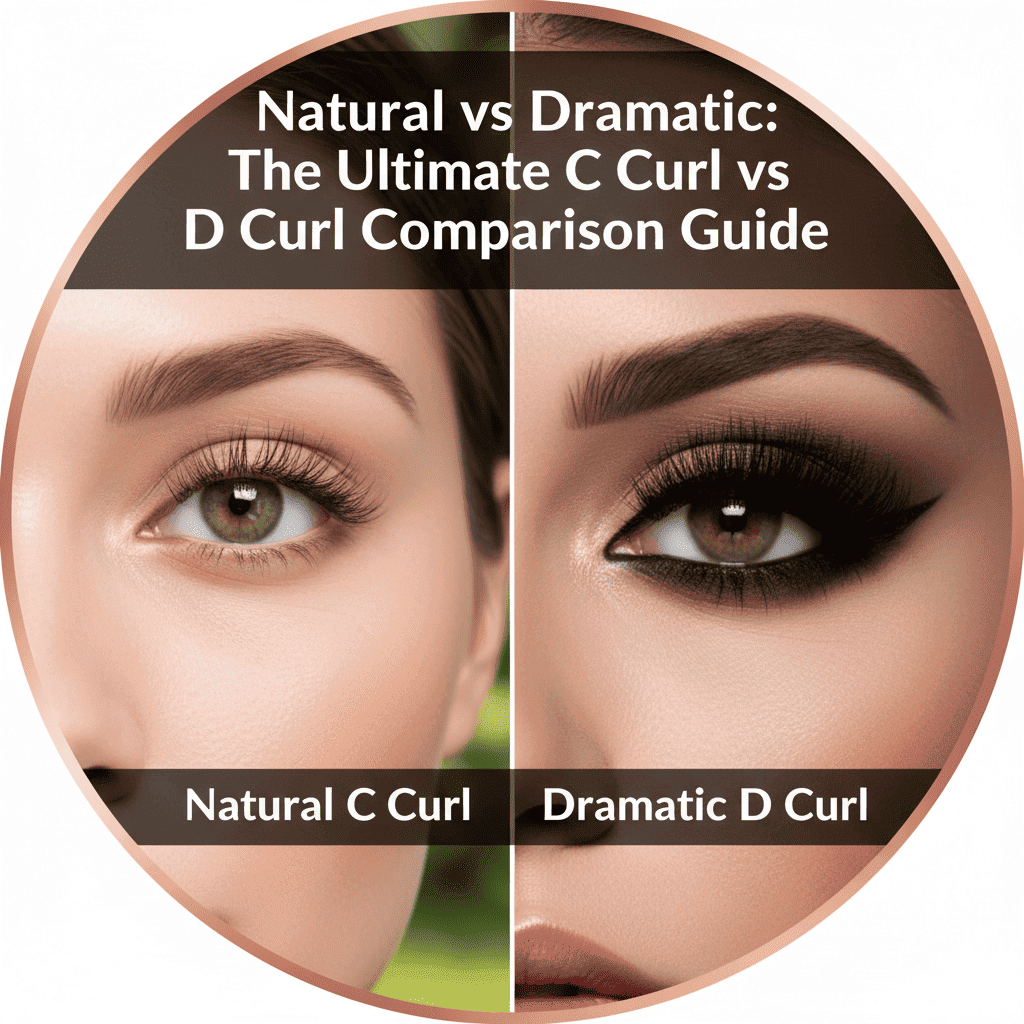
Natural vs Dramatic: The Ultimate C Curl vs D Curl Comparison Guide

B Curl vs C Curl vs D Curl: Which Eyelash Extension Curl is Right for Your Eye Shape?


